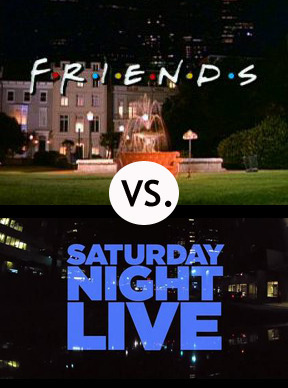Bathroom Readers' Institute's Blog, page 156
November 22, 2013
It’s Fact-or-Fake Friday! “Stuffing” Edition
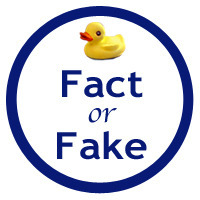 It’s Friday, and that means it’s time to try to fake you out. Two of three stories about stuff being stuffed where it shouldn’t be stuffed are real…and one we made up. Can you guess which one is the fake? Pick your answer at the end of the article and see if you’re right.
It’s Friday, and that means it’s time to try to fake you out. Two of three stories about stuff being stuffed where it shouldn’t be stuffed are real…and one we made up. Can you guess which one is the fake? Pick your answer at the end of the article and see if you’re right.
A.
A 57-year-old Rite-Aid cashier from Bismarck, North Dakota, told her employer that her hearing had gotten so bad over the past 12 months that she needed special accommodations to do her job properly. Her boss balked, asked her to instead first see an ear doctor. She did, and that’s when it was discovered that she had a dead June beetle lodged in her ear canal. The bug was removed, her hearing was restored, and she returned to work.
B.
Firefighters in Matheson Hammock, Florida, conducted a daring rescue this week on a baby raccoon that had its head stuck in a jar. A local TV news crew discovered the animal walking around with a jar on its head and became concerned when it sat atop a trash can and stopped moving. Miami Fire and Rescue came to the scene and extricated the animal, which then scampered away into the night.
C.
Drexel University in Philadelphia is employing the use of a novel new doctor-training instrument: a robotic butt that helps train doctors on how to give prostate exams. The plastic butt, known as “Patrick,” is hooked up to a video screen, which shows a virtual male in a hospital gown bent over a desk. The robot has sensors, which register the pressure, and can alert the medical student if he or she pokes too hard. The experience is interactive, and also gives the student the opportunity to practice eye contact and communication skills.
Want more fakes? Check out Uncle John’s Fake Facts. (Really!)
November 21, 2013
5 Doughnuts From Around the World
If there’s one thing everybody can agree on, it’s doughnuts. It seems like every culture on earth has perfected some kind of sweetened and fried dough. Here are just a few doughnuts from around the world.
Country: France
Details: French cooks can make even a doughnut—simple dough, cooked in oil—seem fancy. “Beignet” is a deep-fried pastry made out of a versatile dough base called choux. Consisting of little more than butter, flour, eggs, and water, the same dough is used to make other French desserts, including éclairs and profiteroles. A beignet is usually rectangular, served hot, and topped with a mound of powdered sugar.
Pastry: Kleinur
Country: Iceland
Details: Iceland’s version of the doughnut is made out of flattened dough, which is then cut into the shape of a parallelogram. A hole is cut in the middle, through which one of the ends is pulled through, making a knot. Then, it’s fried…in beef tallow.
Pastry: Fritule
Country: Croatia
Details: These doughnut-hole like treats are a traditional Christmas treat in the former Yugoslavian republic. Balls of dough are flavored with brandy and orange zest, filled with raisins, and are then deep-fried and topped with powdered sugar.
Pastry: Picarones
Country: Peru
Details: The idea of doughnuts was introduced to Peru by European explorers in the 16th century. But unlike wheat or potato flour, picarones are made from flour ground out of starches native to Peru: squash and sweet potato. After being fried, picarones are coated in a molasses syrup called chancaca.
Pastry: Jyutping
Country: China
Details: These doughnuts from the Canton region are also called “ox-tongue” or “horse ear”—because that’s what these flat, fried, floppy pieces of dough look like. Soft on the outside, chewy on the inside, they’re traditionally served with soy milk.
November 20, 2013
5 Quick Facts About John F. Kennedy
Some things you probably didn’t know about the 35th president,
who was assassinated 50 years ago this month.
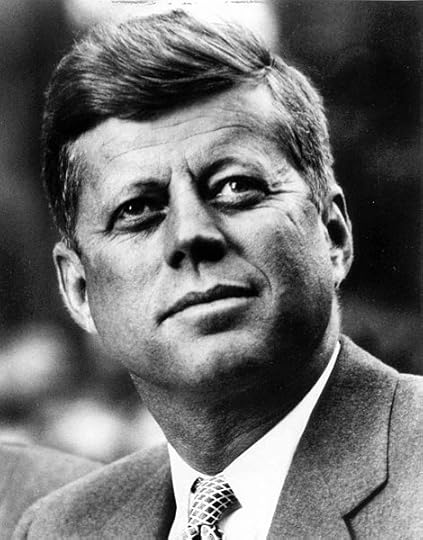 • It’s political lore that John F. Kennedy won the 1960 election on the strength of the first-ever televised presidential debates: Kennedy appeared calm and collected, and wore makeup to look good on TV, while his opponent, Richard Nixon, seemed nervous and sweaty. Kennedy may have won the image game, but the debates didn’t hand him the keys to the White House. Gallup polls throughout 1960 show a very close race…and so did the outcome. Kennedy beat Nixon handily in the Electoral College (303 to 219), but got just 112,000 more votes, out of 68 million total.
• It’s political lore that John F. Kennedy won the 1960 election on the strength of the first-ever televised presidential debates: Kennedy appeared calm and collected, and wore makeup to look good on TV, while his opponent, Richard Nixon, seemed nervous and sweaty. Kennedy may have won the image game, but the debates didn’t hand him the keys to the White House. Gallup polls throughout 1960 show a very close race…and so did the outcome. Kennedy beat Nixon handily in the Electoral College (303 to 219), but got just 112,000 more votes, out of 68 million total.
• Since the assassination of Kennedy in 1963, conspiracy theories have persisted, with some claiming government involvement or at least a government-directed cover-up. It reached a fever pitch in 1992, with the release of Oliver Stone’s conspiracy-exploring film JFK. That year, President George Bush signed the Assassination records Collection Act. It requires that all internal, unreleased government documents about the Kennedy assassination to be made public by October 26, 2017.
• President Kennedy famously had many mistresses and extramarital affairs, but by the time of his death, he’d stopped cheating on his wife. The death of his two-day-old son Patrick Kennedy in August 1963 reportedly prompted Kennedy to recommit himself to marriage and family life.
• Kennedy publicly pushed for NASA to get a man on the moon, and it did, in 1969. But a man on the moon was not Kennedy’s first choice for space travel. He initially directed NASA to send a man to Mars. Authorities at the agency talked him out of it, because it would be too expensive and impractical.
• On November 20, 1963, Kennedy got to view an early print of the upcoming James Bond film From Russia With Love. (He’d once told Time that the Ian Fleming novel it was based on was one of his favorite books.) It was the last movie he ever saw—he died two days later.
November 19, 2013
It’s World Toilet Day
This funny-sounding idea might be the most important “holiday” in the world. Seriously.
 Earlier this year, United Nations secretary-general Ban Ki-Moon, along with a coalition from Singapore, introduced a resolution to declare November 19th the first “World Toilet Day.” That sounds lighthearted or silly, but then maybe here in the U.S. we take for granted our widespread sanitation and consistent access to toilets. Worldwide, the lack of sanitation and toilets is a public health crisis. “Sanitation is central to human and environmental health,” Ban said. “It is essential for sustainable development, dignity, and opportunity.” In other words, it’s a basic human right that a lot of humans do not get to enjoy.
Earlier this year, United Nations secretary-general Ban Ki-Moon, along with a coalition from Singapore, introduced a resolution to declare November 19th the first “World Toilet Day.” That sounds lighthearted or silly, but then maybe here in the U.S. we take for granted our widespread sanitation and consistent access to toilets. Worldwide, the lack of sanitation and toilets is a public health crisis. “Sanitation is central to human and environmental health,” Ban said. “It is essential for sustainable development, dignity, and opportunity.” In other words, it’s a basic human right that a lot of humans do not get to enjoy.
More than 2.5 billion people—a third of the world’s population—don’t have access to adequate toilets. (600 million people in India alone lack good toilets.) That leads to what the U.N. calls “open-air defecation,” or doing your business in the streets, a field, by a river, etc. That leads to more health problems. Diarrhea causes the deaths of more than 800,000 babies and toddlers every year in the developing world, making it deadlier to that age group than measles, malaria, and AIDS combined.
None or not enough public toilets is problematic too, especially for girls and women. “When schools offer decent toilets, 11 percent more girls attend. They are less vulnerable to assault,” Ban said at the U.N. Without an enclosed private toilet, girls have to go to the bathroom outside, which leaves them more open to assault.
The U.N. hopes to use World Toilet Day as an annual call to arms to increase awareness of these and other sanitation and health problems related to toilets. Along with co-sponsor WaterAid, a clean water charity, the U.N. is aiming for an end to open defecation by 2025 and to cut by 50 percent the number of people without access to sanitation.
Here is a video that WaterAid created to raise awareness.
For more info, visit World Toilet Day.
November 18, 2013
5 Facts About PlayStation
The PlayStation 4 just came out, so here’s some trivia about the first three: 5 facts about PlayStation.
 • In the late ‘90s, Sony manufactured the audio processors for the Super Nintendo system. Seeing how much money Nintendo was making, the company decided to make its own system. At the same time, it was working with Phillips Electronics to improve CD-ROM technology. Sony figured out how to run data, graphics, and audio from a CD-ROM simultaneously and super-fast. Result: It could put highly advanced video games on discs, a gaming first. Disc games are also much cheaper to manufacture than cartridges, the traditional delivery method for video games.
• In the late ‘90s, Sony manufactured the audio processors for the Super Nintendo system. Seeing how much money Nintendo was making, the company decided to make its own system. At the same time, it was working with Phillips Electronics to improve CD-ROM technology. Sony figured out how to run data, graphics, and audio from a CD-ROM simultaneously and super-fast. Result: It could put highly advanced video games on discs, a gaming first. Disc games are also much cheaper to manufacture than cartridges, the traditional delivery method for video games.
• Video game industry analysts predicted the PlayStation to fail shortly upon its release in 2000. Why? Because at that point, only software manufacturers like Nintendo and Sega had successfully launched a video game console. Strictly electronics companies, like Sony, had a long history of releasing flop systems, such as RCA’s Studio II, Fairchild’s Channel F, and Magnavox’s Odyssey.
• Released in 2000, the PlayStation 2 is the bestselling video game system of all time—more than 155 million people bought one. The original PlayStation sold 102 million, and the PlayStation 3 has sold 80 million. PlayStation 4 recently sold over 1 million units within the first 24 hours.
• Most popular games for each system: Gran Turismo (PlayStation, 10.85 million copies sold), Grand Theft Auto: San Andreas (PlayStation 2, 17.33 million), Grand Turismo 5 (PlayStation 3, 10.66 million).
• Today, video game systems like the new PlayStation 4 and the Xbox 360 are multimedia entertainment centers—they can be used to watch DVDs, download music off the Internet, and stream films. That idea started with the PlayStation—it could play music CDs (remember those?).
November 14, 2013
It’s Fact-or-Fake Friday!
Introducing a new feature on Uncle John’s Blog. Each Friday, we’ll give you three bizarre news stories. Two of them are real; one we completely made up. Can you guess which one is the fake? Pick your answer at the end of the article and see if you are right.
A.
Police are seeking assistance from the public in tracking down the parties responsible for the theft of nearly 200 sheep. They were stolen last week from a farm outside a village in southwestern England. Anyone who saw suspicious activity in the area, or who was offered sheep or wool “in unusual circumstances or for very low prices” to immediately call the police in the town of…Wool.
B.
A 20-year-old engineering student in Massachusetts used a $1,500 3D printer and nearly $70 worth of plastic polymer to “print” a handgun from plans he downloaded from the file-sharing site The Pirate Bay. As Michael Lowery loaded the weapon (with bullets he purchased, not printed), he accidentally discharged it—into his own foot. “I feel pretty stupid,” he told a reporter after being released from Quincy Medical Center. “Honestly, I’ve never handled a gun before this.”
C.
Last week “Titanic: The Artifact Exhibition” opened in Atlanta, promoted as an opportunity to go “back in time to April 1912, when the Titanic embarked on its maiden voyage.” The traveling exhibition included re-creations of rooms from the doomed ship, as well as hundreds of real artifacts recovered from the wreckage of the Titanic, including dishes, passengers’ clothing, and a porthole. Unfortunately, the exhibition had to temporarily close for a few days due to water damage in hall in Atlanta where it was being staged.
Want more fakes? Check out Uncle John’s Fake Facts. (Really!)
4 Actors Who Got to Choose Their Part
Most actors struggle for years, pounding the pavement, going on audition after audition hoping to get their big break. These actors, however, were offered more than
one part at the same time…and had to choose.
In the 1992-93 TV season, Aniston starred on a short-lived sketch comedy show on Fox called The Edge. Not very many people watched the show (it was cancelled after 18 episodes), but producers at Saturday Night Live must have. Aniston was asked to audition for that show, and she was asked to join the cast for the 1994-95 season. Aniston turned them down, feeling that the pilot she’d just shot for an NBC sitcom called Friends had some promise.
Larry Hagman
When the networks were casting shows for the 1978 TV season, former I Dream of Jeannie Star Larry Hagman was offered roles in two very different shows. The first part: Joe Casey, a former basketball star who takes a job teaching high school history on the sitcom The Waverly Wonders. The other part: J.R. Ewing, the evil head of a powerful oil business family in Dallas. Hagman couldn’t decide—but his wife thought Dallas sounded better, so he took that one. Good move. Dallas ran for 14 seasons (three of those it was the #1 show on TV), became a pop culture phenomenon with the “Who Shot J.R.?” cliffhanger, and earned Hagman two Emmy nominations. The Waverly Wonders went on to star Joe Namath…and was cancelled after just five episodes.
Megan Mullally
Mullally was a little-known character actress in 1998, racking up one-time guest appearances on dozens of TV sitcoms and dramas. Then her luck changed. She auditioned for two new comedies: as the boozy Karen Walker on Will and Grace, and as the tough Carrie Heffernan on The King of Queens. And then she won both roles. Mullally went with The King of Queens, but then changed her mind at the last minute and went with Will and Grace. Mullally won two Emmys co-starring on that show, which ran until 2006. The King of Queens did just fine with Leah Remini starring instead, as it also wrapped up an eight-year run in 2006.
Jerry Orbach
This one comes from the world of theater, but it involves a big TV star. Before Orbach starred as Harry McGraw on Murder, She Wrote, or as Det. Lennie Briscoe on Law & Order, he was a Broadway actor. As an up-and-coming actor in 1960, 25-year-old Orbach was simultaneously offered two roles in two different stage productions. The first was in a big-budget Broadway play called Lock Up Your Daughters, an adaptation of an 18th century Henry Fielding novel that had been a hit on the London stage. The other was The Fantasticks, a small, six-character, romantic musical being staged in a tiny, off-Broadway theater. Orbach was offered the part of “El Gallo,” the narrator, at a rate of $45 a week (about $350 in today’s money). Lock Up Your Daughters, on the other hand, paid $250 a week (the equivalent of $1915). Orbach chose The Fantastics. He later told a reporter he just “liked it,” although he “thought it would close in a week.” He was very wrong about that—The Fantasticks ran until 2002. That’s 42 years, or 17,162 performances, making it the longest-running musical in world history. As for Orbach, The Fantasticks made him a Broadway star, leading to starring roles in hits like Chicago, 42nd Street, and Promises, Promises.
November 13, 2013
5 Disneyland Knockoffs From Around the World
These unauthorized—and blatant—fakes wouldn’t fool even the dumbest of children.
Dreamland (Japan)
In 1959, a group of Japanese investors tried to convince executives at the Walt Disney Company to build a second Disney theme park… in Japan. Disney liked the idea, but not the location and opened a sister park for its Disneyland in California with Disney World in Florida. Undeterred, the consortium decided to move forward without Disney’s blessing and build an exact replica of Disneyland in Nara, Japan. Opening in 1961, Dreamland had all of the amenities of Disneyland, such as replicas of Sleeping Beauty’s Castle, The Jungle Cruise, Autopia, the Matterhorn, a monorail, and even a Main Street USA recreating that old timey small town Americana feel for Japanese tourists. Dreamland was the top amusement park in Japan throughout the ’60s and ’70s…until the genuine article Tokyo Disneyland opened in 1983. Dreamland closed for good in 2006.
Europa Park (Germany)
The most popular amusement park in Europe? Disneyland Paris. The second-most popular amusement park in Europe? Europa Park in Rust, Germany…which hopes you really don’t notice that it’s not, technically, a Disney theme park. Opening in 1975, popular attractions include Geisterschloss, or “Ghost House,” which is inspired by Disney’s Haunted Mansion and the EuroSat, a futuristic roller coaster with a lot in common with Space Mountain. Europa Park’s mascot, by the way, is Euromaus, a friendly cartoon mouse.
Shijingshan Amusement Park (China)
This government-owned park in Beijing opened in 1986. Much like Dreamland, Shijingshan has its own Sleeping Beauty Castle, and employees walk the grounds dressed like characters who bear striking likeness to Donald Duck and Snow White. But its potential infringements aren’t limited to just Disney’s intellectual property. The park is filled with statues, rides, and characters clearly based on Batman, Shrek, Bugs Bunny, Betty Boop, and Hello Kitty, among others. In 2007, Disney actually filed suit, but park management (once again, the Chinese government) claimed that the park’s features were actually based on Grimm’s Fairy Tales, which fall in the public domain, and that any similarities were entirely coincidental. Nevertheless, they quietly removed many of the park’s most obvious Disney references.
Wonderland (China)
In 1998, a Thai-owned development company called the Reignwood Group, made plans for a faux-Disneyland on pastureland 20 miles outside of Beijing. The planned 120-acre Wonderland would have been Asia’s biggest theme park. But the local government, the farmers who worked the land, and the Reignwood Group couldn’t come to an agreement on the value the property…even though construction had begun. It was scrapped entirely in 2000. All that’s there now is a partially completed Cinderella’s Castle, based on the one at the Magic Kingdom in Florida.
Lotte World (South Korea)
South Korea has its own fake Disneyland, as well, but Lotte World’s backers at least poured some money into constructing an impressive tourist attraction in its own right. As Disney’s California complex is split into two parks (Disneyland and California Adventure) Lotte World is split up into distinct theme parks: Magic Island, a manmade island surrounded by a manmade lake, and Adventure, an indoor park, housed under a glass ceiling. Popular—and familiar—attractions include the Gyro Drop (a haunted house thrill ride heavily based on Disney’s Tower of Terror), Adventures of Sinbad (a thinly veiled Pirates of the Caribbean clone), and Pharaoh’s Fury (a takeoff on Disney’s Indiana Jones Adventure). One big difference: you can’t buy souvenir “Mouse ears” at Lotte World. You’ll have to settle for tiger ears.
November 12, 2013
The Curious History of “666”
Even if you aren’t into heavy metal, you probably know that “666” is a number associated with evil. How come? The devil is in the details. Here is a history of 666.
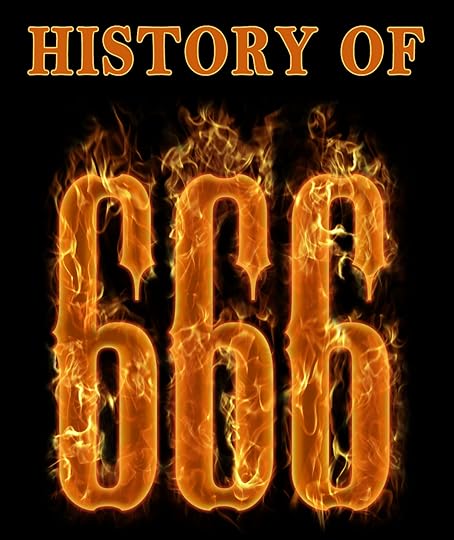 The Book of Revelation was written in Greek sometime between 70 and 95 A.D., by an author known only as John. While its most commonly associated with scary, cryptic, or apocolyptic imagery, it’s really only the 13th chapter of Revelation where that’s present. It begins with a letter to the reader, then describes cataclysmic events of the end times John says he saw in a series of visions.
The Book of Revelation was written in Greek sometime between 70 and 95 A.D., by an author known only as John. While its most commonly associated with scary, cryptic, or apocolyptic imagery, it’s really only the 13th chapter of Revelation where that’s present. It begins with a letter to the reader, then describes cataclysmic events of the end times John says he saw in a series of visions.
It’s in Revelation (13:8) where “666” is mentioned—the only time in the Bible: “Here is wisdom. Let him that hath understanding count the number of the beast: for it is the number of a man; and his number is Six hundred threescore and six.” Doing a bit of quick math, in which a score is 20, the number adds up to 666. Whoever is represented by this number then, the text indicates, is pure evil.
Specifically, the beast referenced here is the beast from the sea, the first of two beasts previously described in Revelation. The beast from the sea is described as having “seven heads, ten horns,” and a leopard-like form with the “feet of a bear” and the “mouth of a lion.” The second beast, also referred to as the false prophet, comes out of the earth and directs people to worship the first beast.
Although most English translations of the Bible give the number of the beast as 666, there’s been disagreement for centuries over whether the number is really…616. One key piece of evidence: an ancient scrap of paper called “Papyrus 115,” a fragment of a manuscript of the New Testament, including parts of Revelation, dating to about 225 A.D. It was found in Egypt by Oxford archaeologists in the early 20th century and clearly gives the number as 616.
Throughout history, people have tried to identify whom Revelation could be referring to as the “beast of the sea” by using the number. They do so by using Koine Greek or Ancient Hebrew alphabets, as numbers in those languages were represented by letters, which made it easy to translate any name into a number (and those are also languages the Bible was written in).
Some scholars think that that alphanumeric code points to one, or at the least the first “beast” of Revelation: Nero. Unfortunately, even using Nero’s name can’t give insight into whether the number of the beast is 616 or 666, as the Greek version of the name and title transliterated into Hebrew gives the number as 666, while the Latin version of the name translates into Hebrew and yields the number 616.
November 11, 2013
Weird Holiday: St. Martin’s Day
The holiday may not be familiar to you, but the customs certainly are.
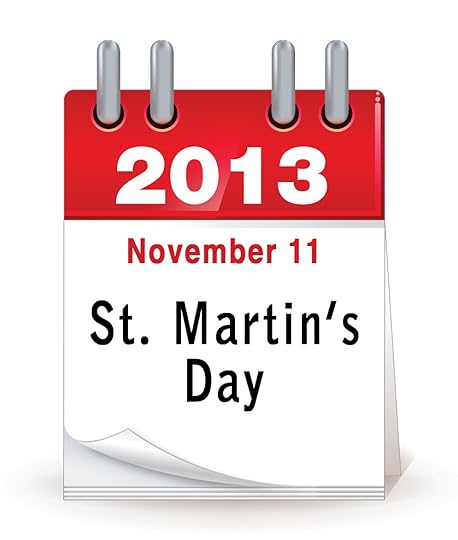 Martin of Tours seemed like a decent guy. Legend has it that in the 4th century, he gave up his job as an elite soldier in the Roman army to become a priest after helping out a beggar one night. He ultimately became a bishop, and a pacifist devoted to spreading peace, love, (and Christianity) across western Europe.
Martin of Tours seemed like a decent guy. Legend has it that in the 4th century, he gave up his job as an elite soldier in the Roman army to become a priest after helping out a beggar one night. He ultimately became a bishop, and a pacifist devoted to spreading peace, love, (and Christianity) across western Europe.
He was sainted shortly after his death, and his feast day is November 11, marking the day he was buried in 397. Though obscure in the U.S., St. Martin’s Day is widely celebrated in Europe, making it one of the oldest continuously observed holidays in the world.
The customs vary by location, and many are reminiscent of American customs for other holidays:
• In Belgium and the Netherlands, St. Martin’s Day is celebrated much more like Halloween. Children make paper lanterns and, once its dark, go door-to-door in search of candy. Instead of saying “trick or treat,” they sing songs or recite poems about St. Martin. In some communities, the search for candy begins at a local church and the kids are marched through the streets with a horseback actor dressed as Saint Martin leading the way. Afterward, there’s often a bonfire in a large public square and everybody eats pretzels.
• In the Czech Republic, it’s celebrated a lot like Thanksgiving, with feasts and a celebration of the harvest, although goose, not turkey, is the traditional entrée. Prague wine shops celebrate by opening at precisely 11:11 a.m. (in honor of the date, 11/11) and hand out free glasses of wine.
• In Malta, children each receive “Il-Borża ta’ San Martin,” or “Saint Martin’s Bag.” Similar to a Christmas stocking, it’s a colorful bag filled with fruits and candy.
• But the weirdest tradition of all comes from Ireland. While it’s not practiced much now, many people have honored the saint by not allowing any wheels to turn on St. Martin’s Day. Reason: Wheels killed St. Martin. He reportedly fell in a stream and got caught up in a mill’s wheel.


